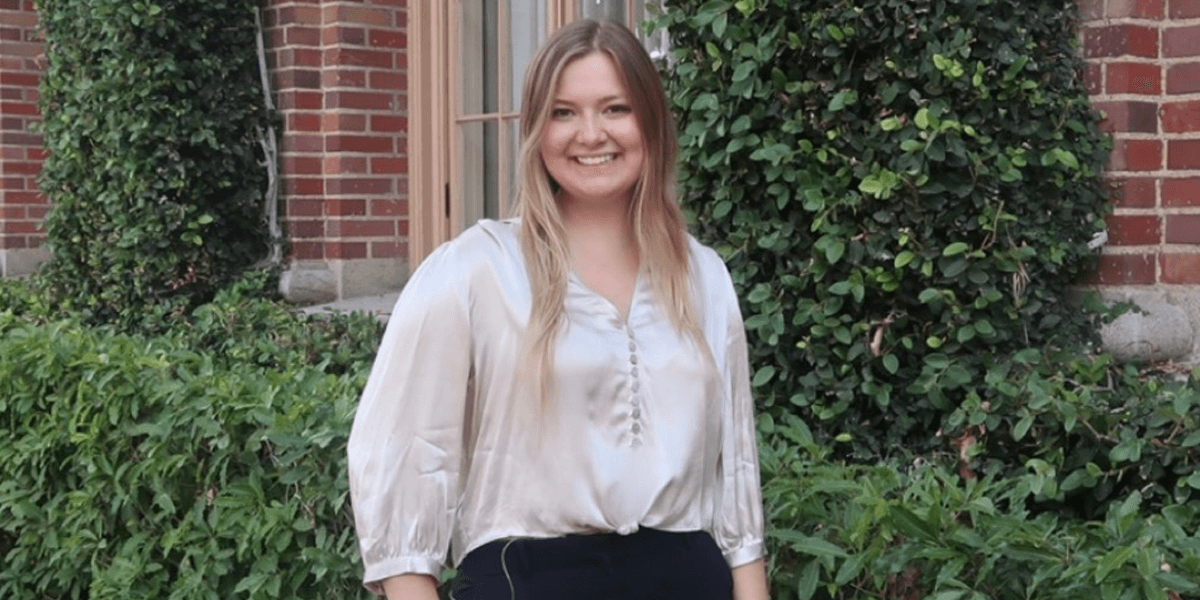
Natalie Humber plans to create a chatbot to help people experiencing diabulimia. Photo/Gilly Mayblum.
It’s been dubbed the “world’s most dangerous eating disorder”—and with good reason. Diabulimia is a life-threatening condition that occurs when a person with Type 1 diabetes intentionally limits their insulin intake to lose weight. Without enough insulin, glucose builds up in the bloodstream instead of going into the cells.
One side effect of this phenomenon is weight loss, but the health consequences are severe. Withholding insulin can lead to diabetic ketoacidosis—when toxic ketones build up in the body—as well as kidney damage, brain swelling, lung dysfunction, cognitive decline and vision problems. It can even lead to death.
And yet, you’ve probably never heard of it. Natalie Humber hopes to change this.
First diagnosed at age 9, Humber is one of 1.45 million Americans with Type 1 diabetes, a chronic condition in which the pancreas produces little to no insulin. She is also a rising senior studying computer science at USC with a passion for health technology, who is interning on Apple’s women’s health team this summer in Cupertino, CA.
“A lot of previous research focused on adults, but adolescents, in particular, have nuances that predispose them to eating disorders.” Natalie Humber.
In May, Humber won the 2023 USC Libraries Research Award in the undergraduate research category for a research paper titled “A Scoping Review of Disordered Eating Behaviors and Diabulimia in Adolescents with Type One Diabetes,” which she co-authored with Shinyi Wu, an associate professor in the USC Suzanne Dworak-Peck School of Social Work and the USC Viterbi School of Engineering’s Daniel J. Epstein Department of Industrial and Systems Engineering.
“Eating disorders are so common in adolescents and teenagers in general—add a chronic condition connected to food and it gets way more complicated,” said Humber.
“A lot of my friends have struggled with diabulimia, and when I told my doctor I was working on this research, he said they frequently see symptoms in patients with diabetes.”
A vast undertaking
A 2017 study suggests diabulimia affects more than 40% of women with Type 1 diabetes and up to 15% of adolescent girls. Yet it is not officially recognized in the Diagnostic and Statistical Manual (DSM), and expert understanding, treatment options, and support are limited.
Starting in freshman year, Humber worked with Wu and staff from USC Libraries to create a diabulimia “scoping review,” or overview. This vast undertaking explores current research to identify key concepts, sources, and gaps in the existing research.
Over the course of two years, Humber sifted through 5 databases and 1,195 articles on diabulimia, searching for carefully selected keywords to identify the risk factors, assessment tools, side effects and interventions, as well as exploring the impact on the young person’s mental health and family.
To the best of Humber and Wu’s knowledge, the scoping review is the first of its kind to analyze the breadth of diabulimia in the adolescent diabetes Type 1 population.
“A lot of previous research focused on adults, but adolescents, in particular, have nuances that predispose them to eating disorders, such as lack of support, often from family members, and the desire to keep things to themselves,” said Humber, who plans to submit the study to peer-reviewed journals.
Humber and Wu found that, while screening tools have been developed to identify diabetic people with diabulimia, there is still a lack of awareness among medical providers. As a result, patients can feel a lack of support.
They also found that online resources, which have been helpful for non-diabetic eating disorders, should be investigated further for people with Type 1 diabetes. With this in mind, Humber plans to use the information gained from this research to develop a chatbot for adolescents with Type 1 diabetes and their families.
For Wu, uniting engineering and social work skills is vital to address health risks, especially for vulnerable populations.
“By working collaboratively, engineers and social work scientists can develop more effective solutions, such as a ‘meet-where-you-are’ chatbot, that can better engage and support these individuals,” said Wu.
“I hope Natalie’s success will help to inspire the expansion of an engineer’s perspective to consider underserved populations, understand their needs and circumstances to provide compassionate engineering solutions.”
Published on August 1st, 2023
Last updated on May 16th, 2024











